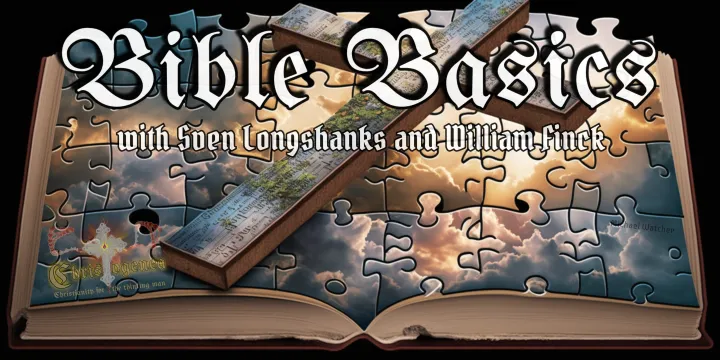
Pitfalls Found in Biblical Research Materials, Part 1 with Clifton Emahiser
Last August Clifton Emahiser, being 90 years old at the time, had taken a bad fall in his home. At that time he realized that he really could not live alone safely any longer, and we brought him here to Florida to stay with us. In the meantime, just before his accident Clifton had sent me three new short essays to proofread, which I never got to until now. So we will begin trying to make that up to him with this evening’s presentation. Here we have Clifton Emahiser with us once again, to present and discuss one of those short essays, which he had titled The Pitfalls Found In Biblical Commentaries, Lexicons & Dictionaries.
It seems to me that Clifton may have planned for this to be another multi-part series, since while the title is broad in scope, here he mainly focuses on the rather recently-developed denominational doctrines of Futurism and Preterism, and how they have affected modern Christian thinking which is reflected in their inclusion in certain popular Study Bibles and Commentaries. While Clifton has treated this topic in the past, here it is presented in a somewhat different context, and he goes further to show how recent these and other ideas about Scripture have been developed by certain denominations.
So now we shall present Clifton’s essay, along with our own comments and discussion:
The Pitfalls Found In Biblical Commentaries, Lexicons & Dictionaries, by Clifton Emahiser
While some of these Biblical helps are better than others, even the best have some serious errors! For instance some Bible cross-references can lead one astray, so let’s consider some of the better center-references found in a few Bibles:
If you have a King James Version Bible with the proper center reference, you can very readily prove Two Seedline teaching with it, for it will take you from one supporting verse of Scripture to another almost endlessly on the subject. (Not that the King James Version is an especially advisable Bible to use for study, as it is alleged to contain approximately 27,000 translation mistakes.)






 Christianity in the Old Testament, Part 3, a continuing presentation of Bertrand Comparet's Sermon, with our own Commentary
Christianity in the Old Testament, Part 3, a continuing presentation of Bertrand Comparet's Sermon, with our own Commentary
 Christianity in the Old Testament, Part 2, a presentation of Bertrand Comparet's Sermon, with our own Commentary
Christianity in the Old Testament, Part 2, a presentation of Bertrand Comparet's Sermon, with our own Commentary

 Christianity in the Old Testament, Part 1, an Introduction: What is a Catholic?
Christianity in the Old Testament, Part 1, an Introduction: What is a Catholic?
 Special Notices to All Who Deny Two-Seedline, Part 24
Special Notices to All Who Deny Two-Seedline, Part 24


 Special Notices to All Who Deny Two-Seedline, Part 22
Special Notices to All Who Deny Two-Seedline, Part 22




 Special Notices to All Who Deny Two-Seedline, Part 17
Special Notices to All Who Deny Two-Seedline, Part 17




 Please click here for our mailing list sign-up page.
Please click here for our mailing list sign-up page.







